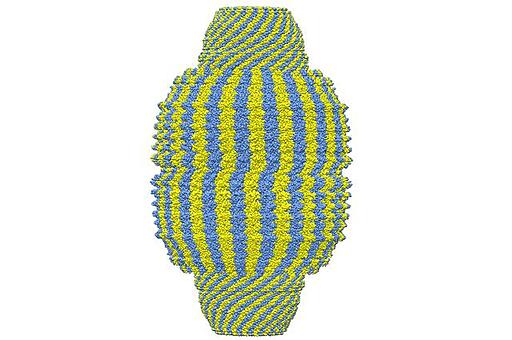To get under the skin of a tumor is a very difficult task. If the goal is to invade tumor cells, then classic drugs are simply too large to get through. A bioresearch team at the University of California, Los Angeles is collaborating with a startup company to develop particles small enough for the job.
The bottom line is that cells are really really small, small enough to be measured in nanometers. For instance, the average yeast cell is about 3000 nanometers in diameter. Therefore, it stands to reason that the best way to penetrate the cell membrane is with tiny biological structures called nanoparticles.
 Nanoparticles are made up of proteins and are found in every human cell. Dr. Leonard Rome, associate director of UCLA’s California NanoSystems Institute, developed special nanoparticles that have hollow centers for transporting drug molecules. “Fifteen years ago, our discovery of how to reconstruct vaults as therapeutic nanocapsules completely changed the direction of my laboratory,” he says in a UCLA article. “Since then, we have been working tirelessly to bring vault drug delivery technology to medical practice.”
Nanoparticles are made up of proteins and are found in every human cell. Dr. Leonard Rome, associate director of UCLA’s California NanoSystems Institute, developed special nanoparticles that have hollow centers for transporting drug molecules. “Fifteen years ago, our discovery of how to reconstruct vaults as therapeutic nanocapsules completely changed the direction of my laboratory,” he says in a UCLA article. “Since then, we have been working tirelessly to bring vault drug delivery technology to medical practice.”
Rome and his team finally found a marketable use for the nanoparticle vaults in the field of immunotherapy. They isolated a protein called CCL21 that summons T cells and dendritic cells in attack formation. Delivering CCL21 to parts of the body labels them as sites that need to be attacked by the immune system. It’s a very useful protein when it comes to immunotherapy, as it can be used to mark tumors for destruction. The big advantage of this kind of treatment is that the immune system doesn’t do as much widespread damage to the body as chemotherapy and surgery, instead targeting a very specific area.

(A rendition of a nanoparticle vault, courtesy UCLA)
The one remaining problem, which we alluded to in the introduction of this article, is delivering CCL21 to a specific enough area, namely, inside the tumor cells themselves. This is where the nanoparticle vaults seemed like the perfect match for the job. As Rome puts it, “We have many vault nanoparticle therapeutics in development, but the CCL21–vault is the first medicine that will reach clinical trials.”
The UCLA research has just earned a $1 million grant from the National Cancer Institute’s Small Business Innovation Research program. For more information on research funding, grants, and awards at Los Angeles, have a look at our free UCLA Funding Report, available via the button below:
Biotechnology Calendar, Inc. makes an appearance at the University of California, Los Angeles campus twice each year for its Los Angeles Biotechnology Vendor Showcase. Our fall show is going on today, so hopefully you’re enjoying yourself at the event. If you missed it, don’t worry: our spring show is coming up on April 2nd, 2014. Our other shows in the Southern California area include the Irvine BioResearch Product Faire™ and the BioResearch Product Faire™ Event at the University of Southern California, Health Science Campus.


